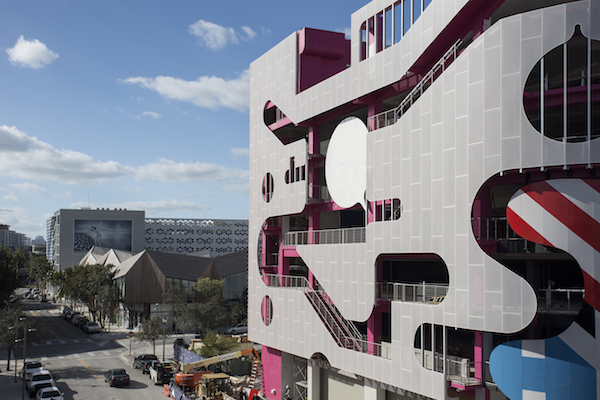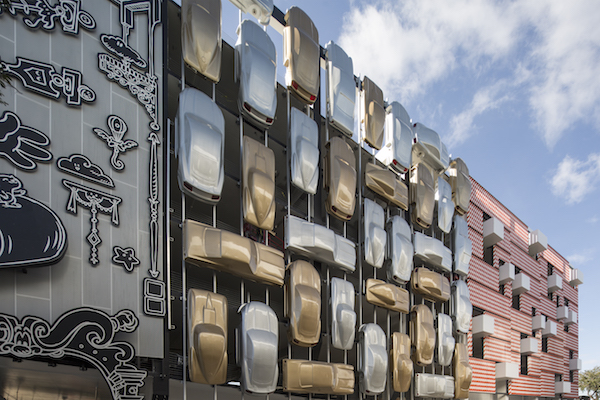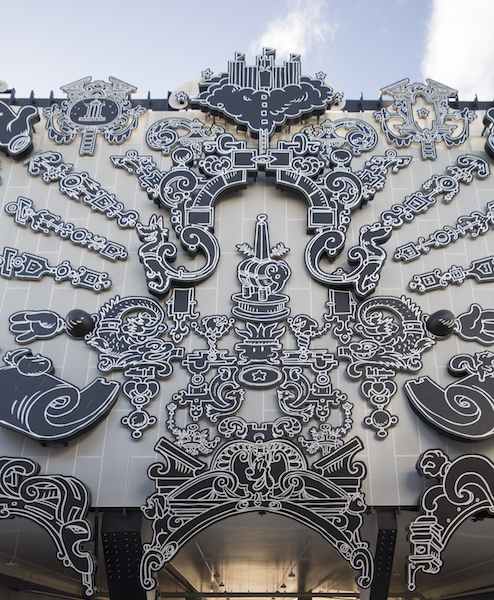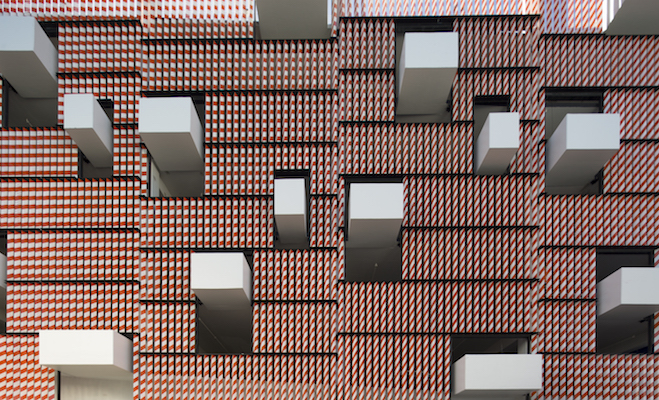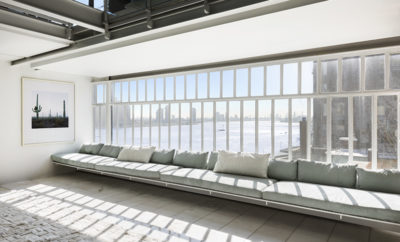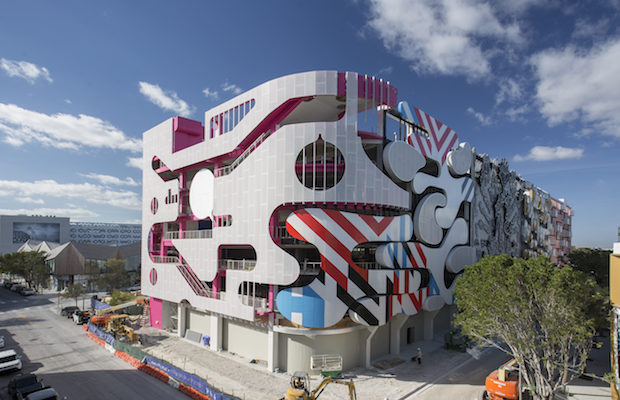 Museum Garage for Miami Design District. Photo by Robin Hill.
Museum Garage for Miami Design District. Photo by Robin Hill.
Architecture
Miami’s Design District Gets a Surrealist-inspired Parking Garage
Across the street from two art museums in Miami’s architecturally flamboyant Design District, the city’s latest and arguably weirdest parking garage is almost complete. And that’s saying a lot in a city known for its wild parking structures, among other things.
A basic block-shaped garage on the inside, it sits on top of ground floor retail; the façade of the 800-car Museum Parking Garage is broken up into six sections, each designed with a radically different skin by an individual architect or firm.
The six firms, only two of which are located in Miami, were brought together from around the world by Terence Riley of Keenan/Riley Architects, who has assisted neighborhood developer Craig Robins with the architectural selections for various other buildings in the district. “We introduced new faces to Miami and continued the tradition of interesting garages instead of stupid filing cabinets for cars” said Riley. The firms tapped by Riley include Work Architecture Company (WORKac), J. Mayer H., Clavel Arquitectos; Nicolas Buffe, Keenan/Riley Architects, and Sagmeister & Walsh.
What was the driving force behind creating such an oddball garage, besides continuing a rather cool tradition, bringing together some amazing architects, and perhaps a bit of architectural one-upmanship? Well, Riley says, “the inspiration was the surrealist parlor game, the exquisite corpse,” where an artist would begin a drawing and then pass it on to another player, and then another, and another, with each person adding to the work while concealing it from the others.
It’s perhaps not a big surprise that MoMA in New York has a particularly good example of a surrealist corpse drawing, by Yves Tanguy, Joan Miró, Max Morise, and Man Ray, created in 1927. And Riley was the chief architecture curator there for many years before moving to Miami.
So, what did the six firms design? Riley characterizes this architectural experiment as “a full on optical bucket of cold water.” Work Architecture Company (WORKac), from New York, created an ant-farm-esque skin on the end, three feet deep, that contains various mini-uses such as a playground, library, and pop-up art space, slathered in plenty of bright pink automotive paint. While Berlin–based J. Mayer H.’s design is a jumble of woggle and kidney shaped puzzle pieces sliding under the WORKac façade as they scramble around the building’s corner.
Clavel Arquitectos, located in Miami, hoisted up forty-five full-size car bodies coated in silver and gold, reflecting the traffic that so many Miamians take secret pleasure in complaining about.
Nicolas Buffe, of Tokyo and Paris, pasted on cartoonish baroque pediments, gargoyles, and cartouches, all in black with white outlines. The look, as a whole, screams “postmodern Toontown.”
Riley, the second Miami-based architect, saved a section of the project for himself, sheathing it in traffic control barriers appearing as if they were brise-soleil. And like many fearless Miami drivers, a few of the cars from Clavel’s adjacent section have already driven through them.
Finally, Sagmeister & Walsh, designers from New York, are doing a simple blue mural with a candle burning at both ends. While more subdued than the other sections, one could argue that the contrast makes the others pop out just a little bit more.
The garage is almost complete and slated to open in mid-April.
Sean McCaughan is a Miami-based writer who covers architecture, art, real estate for a variety of publications and for his website The Big Bubble Miami.


